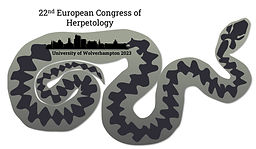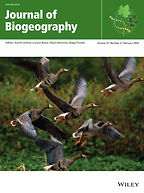The impact of global climate change on the development and phenotypic diversity in oviparous ectotherms
Project number: PN-III-P1-1.1-PD-2021-0591
Acronym: PHENOCLIM
Period: April 2022 - March 2024
Team members:
PI: Iulian Gherghel, PhD
Dan Cogalniceanu, PhD
Project summary:
Range shifts, habitat loss and species extinctions have been already observed due to climate change. The effects on ectothermic vertebrates are predicted to be particularly severe. Polymorphic reptiles are an excellent model system to study the influence of climate change. The diverse morphs of polymorphic species have been observed to have divergent niches and different thermal physiological optimums, and respond differently to the changing climate. The current project aims to explore the effects of climate change on development and phenotypic diversity of oviparous reptiles. The objectives of the proposed project are to study: the spatial variation of characteristics of phenotypic diversity, evaluate the effects of warming on phenotypic
diversity, study the effects of extreme weather events on the phenotypic diversity, and to study the diversity, and to study the spatial variation of development of phenotypic diversity in response
Natrix natrix - Grass snake
The grass snake is an oviparous widely spread non-venomous snake species distributed across most temperate Eurasia, from Germany to Lake Baikal in Russia and western China, spanning across multiple climate regions. Despite its large range distribution, its occurrence is patchy and prefers wet habitats, often found close to freshwater (river valleys, lakes, coastal habitats, lagoons, woodland, and field margins, and along irrigation channels). Generally, reproduction occurs in the spring and early summer months. The grass snakes exhibit a wide range of color variations on their temporal spots, backs can be light or dark, to melanistic, different darker patterns can also be observed (spots, zig-zags, lines, etc), and in some regions (particularly in the south), two yellow stripes from head to tail. Adults tend to have around 1 m in length but larger individuals (up to 1.8 m) can be observed.

Grass snake - Natrix natrix
Lacerta agilis - Sand Lizard
The sand lizard is an oviparous widely spread lizard species distributed across most temperate Eurasia, from France to Lake Baikal in Russia, spanning across multiple climate regions. Despite its large range distribution, its occurrence is patchy and prefers relatively dry habitats (pastures, riparian habitats, gardens, coastal habitats with Juncus sp.). Generally, reproduction occurs in the spring and early summer months, however different reproductive strategies exist, where females from the northern part of the species range can lai eggs later in the season (late clutches generally develop faster than early clutches). The sand lizards exhibit a wide range of color variations with green, grey, or reddish backs, with or without lateral and dorsal darker stripes or patches and ocellated marks. Adults tend to reach (and sometimes surpass) 20 cm in length.

Sand lizard - Lacerta agilis
Măntoiu, D.S., Mirea, I.C., Şandric, I.C., Cîşlariu, A.G., Gherghel, I., Constantin, S., Moldovan, O.T. (2022) Bat dynamics modelling as a tool for conservation management in subterranean environments. PLoS ONE 17(10): e0275984. - PDF -
Fănaru, G., Telea, A.E., Melenciuc, M. Gherghel, I., (2022): Melanism in Natrix natrix (Linnaeus, 1758) from Danube Delta Biosphere Reserve Romania. Poster presentation. 6th European Congress of Conservation Biology. August 22-26, 2022, Prague, Czech Republic.
Gherghel, I., Melenciuc, R., Sahlean T.C., Strugariu, A., Zamfirescu, S.R., Martin, R.A., Cogalniceanu, D. (2022): Modeling the effects of climate change on the distribution and phenotypic diversity of European grass snakes (Natrix natrix). Poster presentation. 21st European Congress of Herpetology. September 5-9, 2022, Belgrade, Serbia.
Melenciuc, R., Gherghel, I. (2022): Spatial patterns and the climatic determinants of the temporal neck spots, dorsal pattern polymorphism in European grass snakes. Poster presentation. 21st European Congress of Herpetology. September 5-9, 2022, Belgrade, Serbia.

Fănaru, G., Telea, A.E., Gherghel, I., Melenciuc, M. (2022): Melanism in the grass snake Natrix natrix (Linnaeus, 1758) from the Danube Delta Biosphere Reserve, Romania. Herpetozoa. 35: 257-263. doi: 10.3897/herpetozoa.35.e85310
to climate change across species ranges. From this project, I expect to find geographic differences in phenotype frequency, differences in temperature and precipitation regimes where each phenotype is dominant, higher predicted mortality in sites at lower latitude compared with sites at higher latitude, and that the effects of climate warming and stochastic events to vary across the species range, and to have a synergistic effect. We will be able to detect which populations covering Europe and East Asia are more prone to be affected by the changing climates.
Keywords:
• climate change
• Species distribution modeling
• macroecological patterns
Objectives
The current project aims to explore the effects of climate change (i.e. temperature) on the development and phenotypic diversity of ectothermic oviparous vertebrates (the European grass snake - Natrix natrix, and the sand lizard – Lacerta agilis) during their development.
The objectives of the project are to study:
-
the spatial variation of characteristics of phenotypic diversity,
-
evaluate the effects of warming on the phenotypic diversity,
-
study the effects of simulated extreme weather events on the phenotypic diversity,
-
study the spatial variation of development phenotypic diversity response to climate change across the species range.
Study species
Progress reports
-
March 2022: competition results published by UEFISCDI
-
March 2022: signing the grant contract and employment
-
February - April 2022: acquiring the necessary field collection and research permits
-
April 2022 - December 2022: acquiring phenotypic data of the study species
-
May - July 2022: fieldwork in the Eastern half of Romania
-
June 2022/December 2022: results of our research regarding the widespread occurrence of melanism in grass snakes populations from the Danube Delta was accepted for publication (June) and published (December) in Herpetozoa (IF 1.053).
-
August 2022: results of our fieldwork from Danube Delta have been presented at the 6th European Congress of Conservation Biology held from August 22–26, 2022, in Prague, Czech Republic.
-
September 2022: results of our phenotypic data analyses on Natrix natrix have been presented at the 21st European Congress of Herpetology held from September 5-9, 2022, in Belgrade, Serbia.
-
October 2022: results of our research regarding the influence of temperature on the organisms using subterranean environments was published in PLoS One (IF 3.752).
-
January 2023: the second stage of our project has started, in which we will evaluate the effects of extreme climatic events on the development and phenotypic diversity of Lacerta agilis and Natrix natrix via modeling and laboratory studies
-
January 2023 - December 2023: database analysis and manuscript writing
-
January 2023 - April 2023: lab setup
-
May 2023: after finishing setting up the laboratory for conducting the experiments, we are now starting the field research season
-
June 2023: first eggs have been laid and experiments begun
-
July 2023: abstract with the results from our project have been submitted to the SEH 2023 conference
-
July/August 2023: the first hatchlings emerge
-
September 2023: results of our phenotypic data analyses on Lacerta agilis have been presented at the 22nd European Congress of Herpetology held from September 4-8, 2023, in Wolverhampton, United Kingdom.
-
November 2023: results from our project have been presented during the Ecology and Ecosystem Protection Conference held from November 2-4, in Bacau, Romania.
-
January 2024: results of our research was published in Journal for Nature Conservation (IF 2).
-
January 2024: results of our research was published in Journal of Biogeography (IF 3.9).
Rezumat executiv (în Română / in Romanian)
Schimbările climatice afectează regiuni extinse ale globului, fiecare ecosistem fiind afectat de evenimente climatice de o severitate extremă (valuri de căldură, secete, răcire rapidă). Sunt prognozate creșteri ale temperaturilor dar și a frecvenței evenimentelor climatice extreme în următorul secol. Reptilele polimorfe sunt un model de studiu excelent pentru a studia influența schimbărilor climatice asupra organismelor. Diversele fenotipuri ale speciilor polimorfe au nișe ecologice și optimi termici fiziologici diferiți și răspund în mod diferit la schimbările climatice. Proiectul a studiat efectele schimbărilor climatice asupra dezvoltării și diversității fenotipice unor reptile ovipare (Lacerta agilis și Natrix natrix). Ca urmare a experimentelor de laborator arătăm că Lacerta agilis este o specie foarte sensibilă atât la creșterea temperaturii de incubare cât și la fluctuații de temperatură, pe când Natrix natrix este o specie mai rezilientă atunci când aceste evenimente (creșterea temperaturii și fluctuații de temperatură extreme) nu se produc concomitent. În ceea ce privește diversitatea fenotipică, în partea de sud a arealului celor două specii studiate, modelele sugereaza fie o reducere a arealului (în cazul Lacerta agilis) fie o eroziune a diversității fenotipice favorizând fenotipuri deschise la culoare. De asemenea, diversitatea fenotipică poate să medieze impactul schimbărilor climatice asupra populațiilor de ectoterme ovipare și astfel să ajute la supraviețuirea acestora în condiții de încălzire și de vreme extremă, dar și să ajute la extinderea arealului speciilor către nordul Eurasiei. De asemenea, atât fenomenul de încălzire climatică cât și evenimentele meteo extreme au un efect sinergistic și acolo unde populațiile celor două specii sunt expuse celor două manifestări ale schimbărilor climatice, acestea vor fi cel mai grav afectate.
Executive summary (în Engleză / in English)
Climate change affects extensive regions of the globe, with each ecosystem being impacted by extreme climatic events such as heatwaves, droughts, and rapid cooling. Increases in temperatures and the frequency of extreme weather events are projected for the next century. Polymorphic reptiles serve as an excellent study model to examine the influence of climate change on organisms. The various phenotypes of polymorphic species exhibit different ecological niches and physiological thermal optima, and they respond differently to climate change. This project investigated the effects of climate change on the development and phenotypic diversity of oviparous reptiles (Lacerta agilis and Natrix natrix). Laboratory experiments revealed that Lacerta agilis is highly sensitive to both incubation temperature increases and temperature fluctuations, whereas Natrix natrix is more resilient when these events (temperature increase and extreme temperature fluctuations) do not occur concurrently. Regarding phenotypic diversity, in the southern part of the range of the two studied species, models suggest either a reduction in range (in the case of Lacerta agilis) or an erosion of phenotypic diversity favoring lighter-colored phenotypes. Additionally, phenotypic diversity may mediate the impact of climate change on populations of oviparous ectotherms, thereby aiding in their survival under warming and extreme weather conditions, as well as facilitating the expansion of species' ranges towards northern Eurasia. Moreover, both the phenomenon of climate warming and extreme weather events have a synergistic effect, and where populations of the two species are exposed to both manifestations of climate change, they will be most severely affected.

Gherghel, I., Melenciuc, R., Vlad, S.E., Spaseni, P., Martin, R.A., Cogalniceanu, D. Exploring climate change impact on phenotypic diversity and geographic distribution in the sand lizard (Lacerta agilis). 22nd European Congress of Herpetology, September 4 -8, 2023, Wolverhampton, United Kingdom.
Gherghel, I., Melenciuc, R., Sahlean, T.C., Strugariu, A., Spaseni, P., Fanaru, G., Zamfirescu, S.R., Martin, R.A., Cogalniceanu, D. Evaluating the impacts of future climate change on phenotypic diversity distribution of European grass snake (Natrix natrix) through species distribution models. Ecology and Protection of Ecosystems Conference, November 2-4, 2023, Bacau, Romania.
Melenciuc, R., Gherghel, I., Cogalniceanu, D. 2022. Geographic phenotype clustering and climatic correlates of dorsal pattern variability in European grass snakes. Ecology and Protection of Ecosystems Conference, November 2-4, 2023, Bacau, Romania.
Gherghel, I., Melenciuc, R., Spaseni, P., Vlad, S.E., Zamfirescu, S.R., Strugariu, A., Martin, R.A., Cogalniceanu, D. Assessing the impact of climate change on phenotypic diversity and distribution of the sand lizard (Lacerta agilis). Ecology and Protection of Ecosystems Conference, November 2-4, 2023, Bacau, Romania.


Gherghel, I., Melenciuc, R., Martin, R.A., Cogalniceanu, D. Impact of climate change on the distribution and phenotypic diversity of a widespread Palearctic snake species using experimentally informed species distribution models. January 7-11, 2024, Prague, Czechia.


Sahlean, T.C., Gherghel, I., Zaharia, R., Gavril, V.D., Melenciuc, R., Stanciu, C.R., Strugariu, A. (2024): Spatial and temporal patterns of road mortality in the Caspian whip snake (Dolichophis caspius Gmelin 1758) in Romania. Journal for Nature Conservation. 77: 126547. doi: 10.1016/j.jnc.2023.126547. - PDF -




